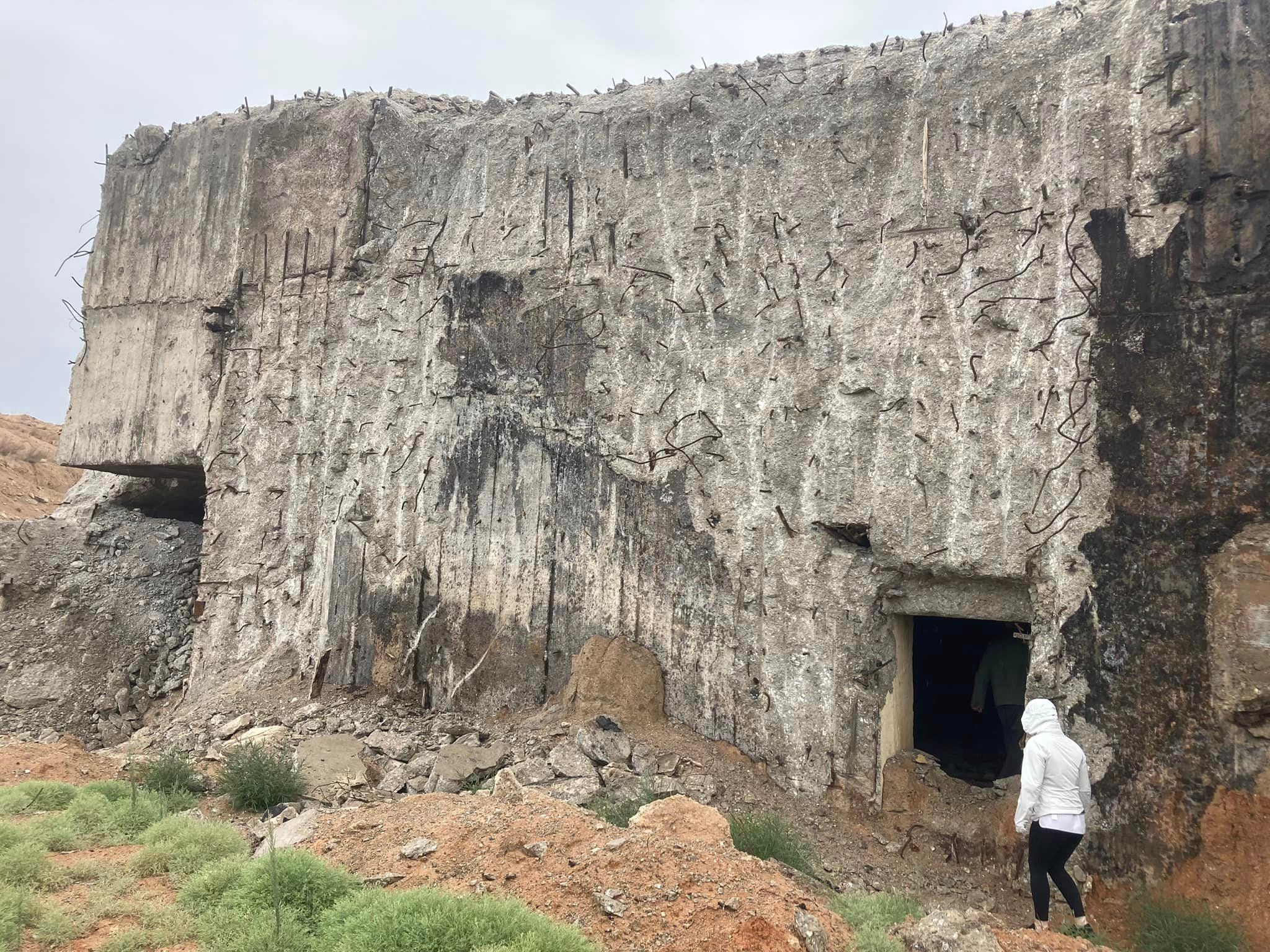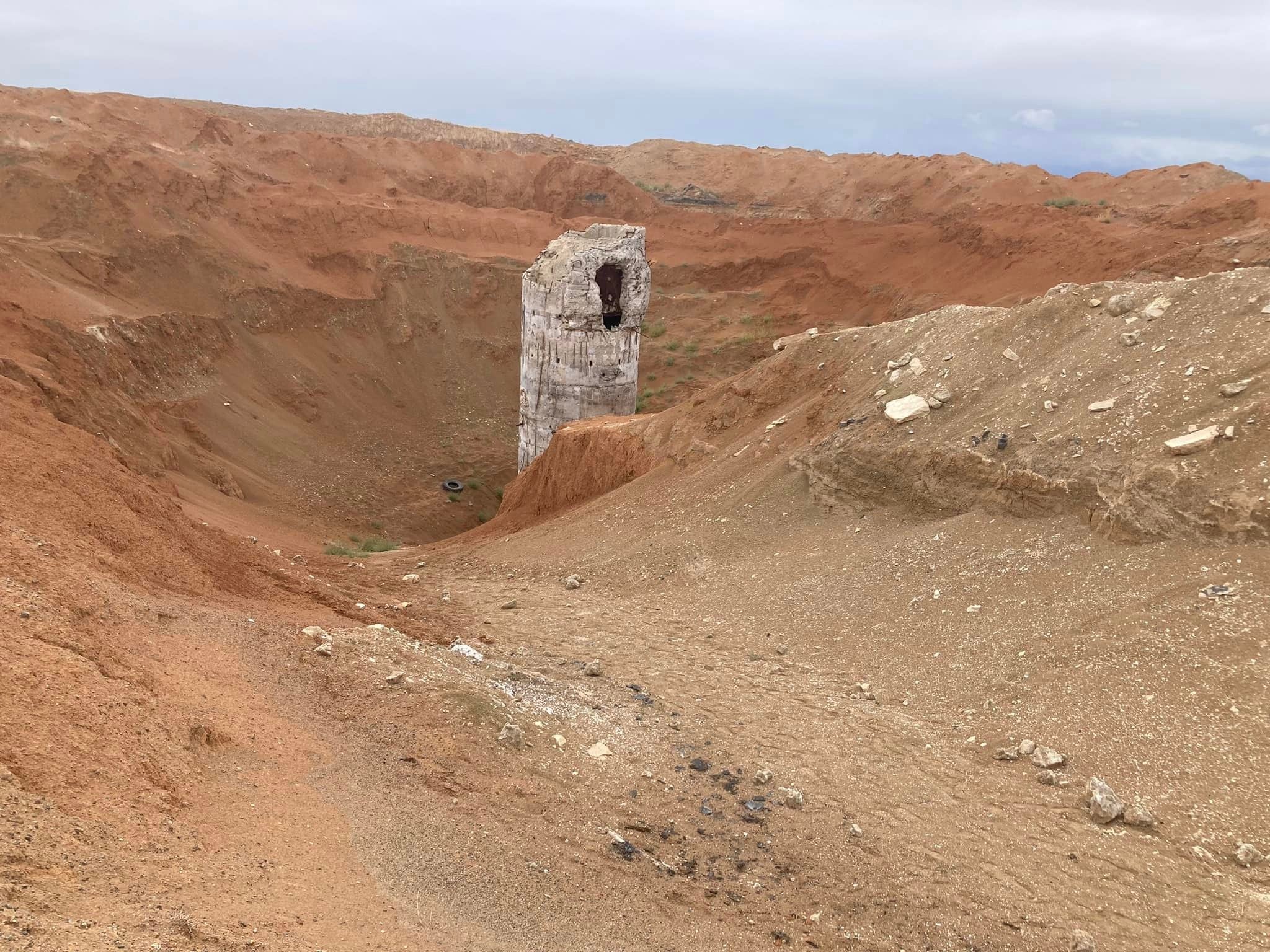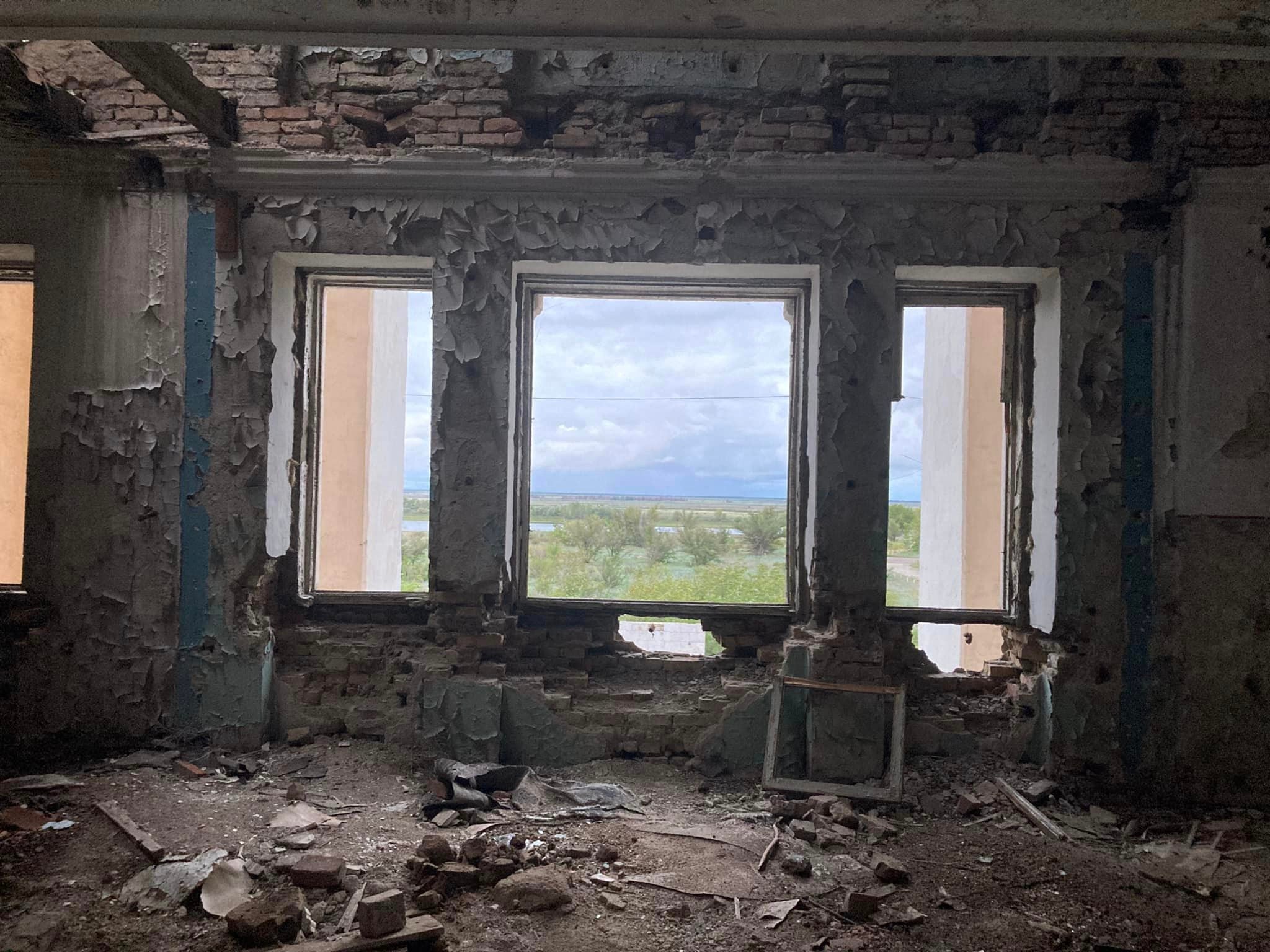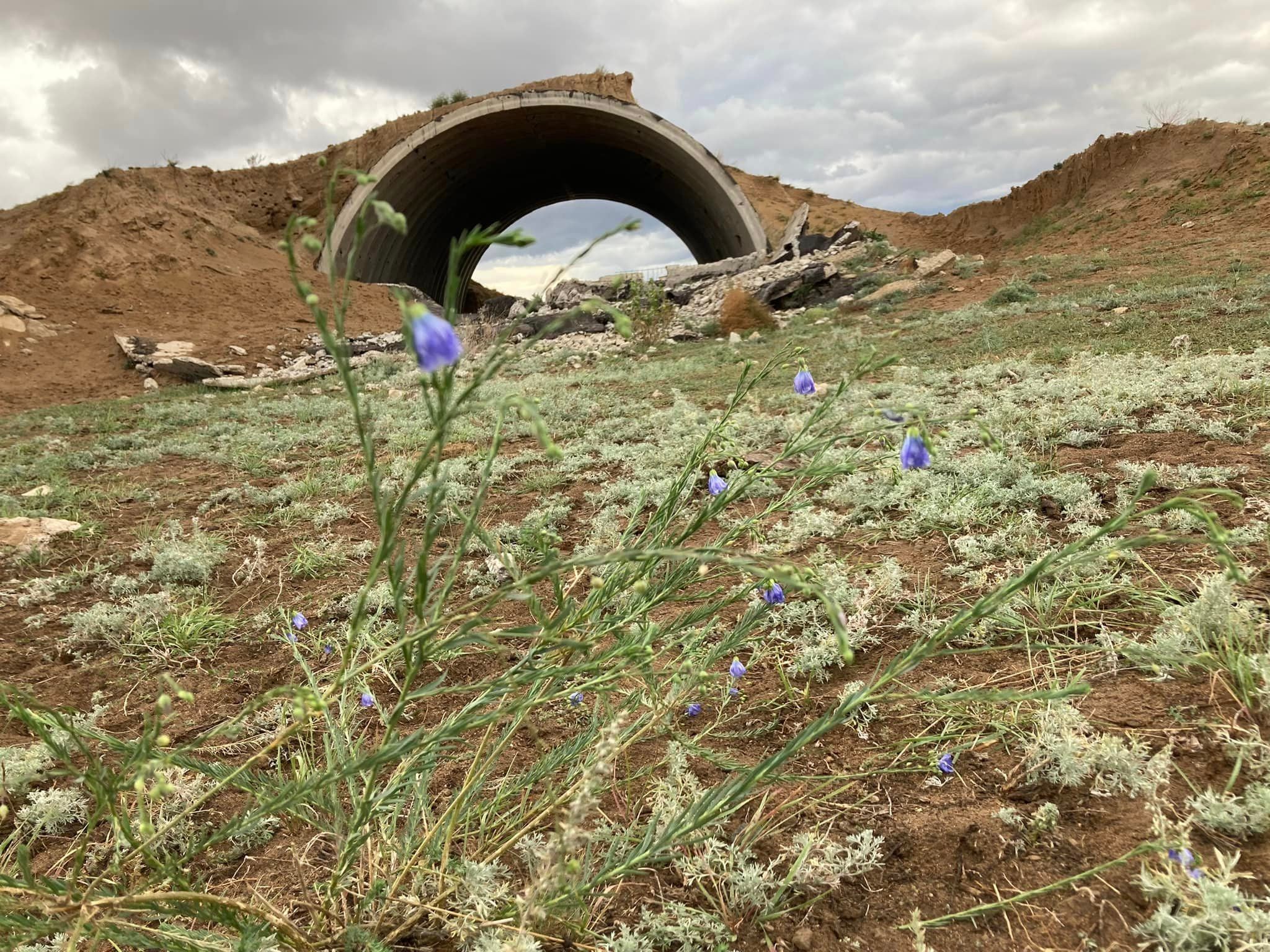What it’s like to take a trip to the only nuclear test site on Earth open to civilians
Arranging a visit to East Kazakhstan’s sprawling, desolate wasteland and secret Soviet nuclear town is far from easy. But the reward is a surreal experience like no other, writes Stephen Rea

We crunched along the shoreline of Atomic Lake, created from a Soviet nuclear explosion 11 times more powerful than the bomb dropped on Hiroshima. As the wind howled and squalling rain licked at our contamination suits, I gripped my hood and yelled to my wife: “Not the usual summer holiday trip, dear.”
The Polygon, a sprawling, desolate wasteland in East Kazakhstan, is the only nuclear test site on Earth that you can visit. But it isn’t easy.
Kazakhstan is the ninth largest country on the planet (and the largest land-locked one), but there is only one guide licenced to tour the zone. Yerlan lives 800 kilometres away in the capital Astana, and travelled in by overnight train to accompany us. It took seven months of planning, dozens of emails, forms, permits, passport copies… and it isn’t cheap (a day trip from Semey cost us $730 each). Only a handful of tourists have ever made the trek to this barren patch splayed across 18,000 square kilometres, an area almost as big as Slovenia.

Our base was the nearest city, now called Semey, a typical boxy USSR construction of around 200,000 inhabitants. Up until 2007 it was known as Semipalatinsk, the name change an attempt to escape the negative connotations aroused by its unwelcome Cold War inheritance.
We sped through empty, colourless scrubland, this part of the vast Eurasian Soviet empire chosen because the population density is less than one person per 1,000 kilometres. Here the Great Steppe, which stretches from Mongolia to Hungary, was so flat and stark we could see for hundreds of miles. The occasional Lada or a wandering horse or cow were the only interruptions to the landscape, the clouds drunkenly hanging low like fluffy grey chandeliers. The weather is harsh here: the record low -55C, the record high 46C.
After 90 minutes we turned off the paved road into the Polygon, known officially as the Semipalatinsk Test Site. The path was boneshakingly rutted, but bizarrely there was more traffic, as coal lorries from a nearby mine trundled past. The ground was littered with their discarded tyres, huge chunks of coal flying from their uncovered trailers, while our minivan crushed the fist-sized detritus. We stopped for a toilet break and Yerlan ran through the history: 456 nuclear bombs detonated between 1949 and 1989, some in atmospheric tests dropped from planes, others exploded underground. There are a total of 50 square kilometres off-limits even today, comprised of multiple fenced parcels with dangerous radiation levels.
The occasional Lada or a wandering horse or cow were the only interruptions to the landscape, the clouds drunkenly hanging low like fluffy grey chandeliers
Back onboard we went offroad down a dizzying array of turns, traversing dirt tracks and muddy trails while the vehicle shuddered and juddered so crazily I was convinced we would get a flat tyre. After what seemed like a lifetime, we pulled over at the staging point for Atomic Lake.
Yerlan handed us each a Russian Geiger counter and ran through safe Gamma ray readings. We slipped on hazmat suits, 3M masks, shoe coverings and sunglasses. Then the safety instructions: don’t kick up dust; don’t drag your feet; walk in large, lunge-like steps; don’t touch anything; don’t pick anything up from the ground. Our driver retired to what Yerlan called “the clean area” and we clomped towards the lake.
The Soviet test blast sent so much soil and rock shooting into the air that when it all splattered back down, it formed a range of hills. Scientists then filled the crater with water to become Atomic Lake, the only one of its kind in the world.

We spent 45 minutes encircling it. I’ve been to Antarctica and deep inside the Arctic Circle twice, both harsh, lifeless landscapes, but this was like being on another planet. The only wildlife we saw on the ground was a tiny beetle, but a few birds flew overhead, a couple even dipping into the lake.
It was grey and brown, our blue gloves stark against the muted background. The only noise the warm, howling wind. Twice rain showers materialized out of nowhere, and the weather seemed apt, the rain adding to the foreboding, bleak atmosphere.
We trekked to our driver and followed Yerlan’s demonstration of how to go through the decontamination process, carefully peeling off our outer outfits, placing them in a rubbish bag, washing our faces, gargling and rinsing and spitting. “We may be being overcautious but it’s best to take no chances,” he told us.
We visited two more underground blast sites. One had been sealed, but the other laid open, a gaping plunging hole, like a well in a gruesome fairytale
Away from the highest radioactivity we visited two more underground blast sites. One had been sealed, but the other laid open, a gaping, plunging hole, like a well in a gruesome fairytale. We peered into the darkness where scientists had dropped the deadliest weapon known to man and ignited millions of tonnes of explosives. No warnings, no tapes, no fences… just a hole you could stumble into.
Our fourth stop was the command bunker, a two-story fortress built to withstand an atomic attack, hidden from US spy satellites under a mound of earth. When the USSR fell three decades ago, economic hardship ravaged the countryside. The locals looted everything, ignoring all radioactive risks, ripping apart the structure and smashing concrete to get at the scrap metal. The bunker felt post-apocalyptic – rubble ankle-deep covered the floor, and I tasted the grit in the claustrophobic air as light flickered in through gaps in the collapsed roof. A faded army sign in Russian read, “Check with security before leaving.” On the way out we found a dead foal, its coat still shining, its eyes still bright.
Next, we drove to an elevator shaft that poked up like a periscope, the transport for nuclear scientists to a secret laboratory buried hundreds of feet below. Looters had excavated the surrounding earth to get at the metal and the remnants looked like a Star Wars set, the exposed red clay the only vibrancy around. Our last stop was an intercontinental ballistic missile silo and another plummeting hole. But it was filled with water and looked tranquil and serene, no more deadly than a paddling pool – indeed, Yerlan said he sometimes swam in it. As teenagers in the Eighties, we feared this nuclear might. I was gazing into a pool that had held a chilling weapon of mass destruction, capable of killing tens of thousands of civilians. Which city was this particular ICBM aimed at? Washington? Paris? London?

We left the Polygon and stopped at a garage to wash what Yerlan called the “atomic dust” off the vehicle. An hour away we called into the abandoned long-range nuclear bomber aircraft base at Chagan, all twisted metal and bricks and broken concrete slabs piled 20 feet high. The barracks were open to the elements, horse dung mixed with mortar and cement making it smell more like a barn than military housing. Here and there were signs of the past: Soviet stars on the walls, a peeling painted Belarus flag, a chipped mural dedicated to “the glorious Red army.”
Near the exit an elderly lady shuffled along the road. Yerlan said that when the complex closed and the Russians left, she stayed behind. Now in her eighties, she lives alone, gathering berries, mushrooms and nuts. She also rescues dogs as it’s a popular spot for locals to release unwanted pets. She told him she enjoys the solitude, and I marvelled at the resilience of the human spirit.
Our final destination was a town so secret it didn’t even have a name until 30 years ago. It was the headquarters for the nuclear testing programme, known simply by the postcode Moscow 400. At the height of the arms race, 40,000 people lived in the sealed, guarded complex, but today its population is a quarter of that. Though it was a small town, the KGB office was the biggest in the country, and we went into their crumbling staff building to poke around and take photos, climbing the stairs to the first storey. Yerlan warned us to only walk on the metal girders as he expected the stone floor was on the point of collapse.

This outpost, perched on the extremity of the USSR’s empire near China, is now called Kurchatov after the leader of the atomic bomb research. It had a building functioning as a cafe, restaurant, bar and social centre. Yerlan introduced us to two resident nuclear physicists, then said it was trivia night, and would we mind if he left us to play with them? He ordered us food before disappearing to another room.
I’ve been to 112 countries, all seven continents and every US State. But the 16-hour tour that ended in a secret Soviet nuclear town, with our guide doing a pub quiz with a team of atomic scientists, is the most surreal day I’ve ever had.
Join our commenting forum
Join thought-provoking conversations, follow other Independent readers and see their replies
Comments
Bookmark popover
Removed from bookmarks